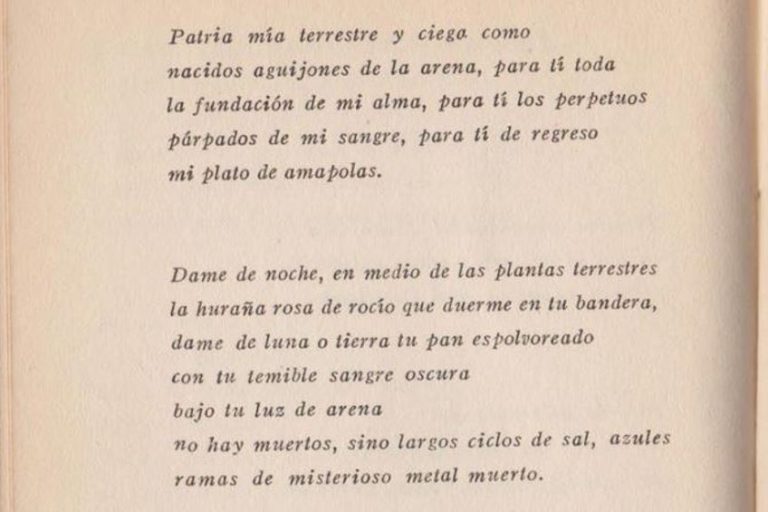Easy Poems to Analyze – A Beginners Guide to Poetry Analysis
Poetry analysis can be a rather difficult thing, especially when you’re only just starting out with it. For this reason, it can be beneficial to find a few good poems to analyze that are also quite easy to understand. It’s generally best to start with the easiest of any topics before progressing onto the harder stuff, and that will be the focus for today. We will examine a number of easy poem analysis examples, as well as an example of a harder poem for comparison purposes. Eventually, you should be able to handle the harder stuff yourself, but let’s get started with the easier stuff first!
Table of Contents
A Few Easy Poems to Analyze
What makes a poem easy to analyze? There are a variety of factors that we could take into account for this. We could say that easy-to-understand poems have simple, or at least simpler, language, but this is not always the case. A poem could have higher-level language while still being rather easy to understand. It does entirely depend on the poem in question, but the use of more conversational language is likely one of the most basic ways that a poem might be seen as easier to understand.
Other factors that could make a poem easier to understand would be something like the use of extensive repetition because that repetition might point towards the meanings that need to be understood. There could also be a reduction in the number of intricate poetic techniques or the use of easy-to-understand metaphors that do not require extensive education to understand.

Speaking of extensive education when it comes to a poem analysis, some poems, especially within certain traditions, were intentionally written as difficult to understand. This will be shown later in this very article, but some of these kinds of poems might make use of difficult references, strange vocabulary, other languages, or aspects of education from vastly different fields. But these kinds of poems will not be the focus today, aside from the final poem we will discuss to demonstrate a difficult poem analysis example.
It should also be noted before we get started with our list of easy poems to analyze, that many older poems are more difficult to understand. This is because language evolves, and as we continue to use a language, we generally find ways to make it more convenient. This usually means altering the way words are presented or reducing the need for lengthy sentences that do not provide the information that is actually needed. That being said, we will examine one old poem to show that this is not always the case.
So, what are a few easy poems to analyze?
A Number of Examples of Easy-to-Understand Poems
In this section, we are going to perform a few poem analysis examples on easy-to-understand poems. This should help to demonstrate how and why these poems are examples of good poems to analyze when you may not be all that familiar with poetic analysis. However, it should always be remembered that even the easiest poem to understand could be pushed a lot further and more meaning could be pulled from it.

There will be interpretations of the following poems that you will feel have not been expressed, and this is because one analyzer will not find all the meanings that can be found. As an ex-English literature teacher, this is something that I always told my students. I do not know everything about a poem, and there may be things that you see that I do not. In addition, poetic analysis and interpretation is not an exact science and is very subjective. So, after these poem analysis examples, you should also give it a go and see what you think of these and other poems.
Sonnet 130: My mistress’ eyes are nothing like the sun (1609) by William Shakespeare
| Date Published | 1609 |
| Type of Poem | Shakespearean sonnet |
| Rhyme Scheme | ABAB CDCD EFEF GG |
| Meter | Iambic pentameter |
| Topic | Satire on beauty |
Shakespeare’s Sonnet 130, which is also known as My mistress’ eyes are nothing like the sun, is the first poem that we will discuss and the oldest one by far. It’s beneficial to look at a very old poem because even old texts, which are usually associated with difficult language, are not necessarily all that difficult. Instead, they can be easy poems to analyze, and this particular poem by William Shakespeare is no different.
The poem is a kind of love poem that is focused on the beauty of a certain woman.
This woman is described in less-than-flattering language, but this is done to later undermine the idea that this person is not beautiful and to instead focus on who they are as a person. They may not be the most attractive person on the planet in physical terms, but as a person, they are truly beautiful to the speaker and worthy of immense adoration. The poem is easier to understand and therefore an example of an easy poem to analyze, and this is because of the straightforward presentation of one statement after another.

Some of the ways in which the language is expressed may be termed strange or archaic by today’s standards, such as stating “no roses see I in her cheeks” rather than using a more contemporarily correct “I see no roses in her cheeks”. The simple metaphors and easy presentation allow this poem to be far more readily understood by those who are looking for good poems to analyze that are also not immensely difficult texts to read and understand.
Do not go gentle into that good night (1947) by Dylan Thomas
| Date Published | 1947 |
| Type of Poem | Villanelle |
| Rhyme Scheme | ABA ABA ABA ABA ABA ABAA |
| Meter | Iambic pentameter |
| Topic | Aging and death |
Do not go gentle into that good night is our first poem from the 20th century on this list and so it is a much more modern poem. The reason that many modern poems can also double as easy poems to analyze is because they often make use of simpler language, and this poem does make use of easier language, although there are some points where it does become slightly more difficult, but never in a way that should get in the way of your understanding of the text as a whole.
The poem is concerned with the idea of aging and death. In more specific terms, the poem is preoccupied with fighting against death.
It tells us that if we are facing death in our lives we should not simply allow it to happen. Instead, we must fight against death. We do not know what comes next, but we do know what exists in our present. We know that life is real, and it is worth fighting for. The poem wants those who are old or sick to remember this fact rather than succumbing to the end of our lives. One of the reasons this poem is an instance of an easy-to-understand poem is because it makes use of a poem structure known as a villanelle.
This structure entails the repetition of two particular lines throughout the poem. So, while the poem makes use of nineteen lines, a large number of those lines are simply repetitions of those two lines, and, in this case, those lines are “do not go gentle into that good night”, meaning that we should not allow ourselves to simply die, and “rage, rage against the dying of the light”, meaning that we must aggressively fight it. This repetition serves as a constant and consistent reminder of the meaning of the poem, and that is difficult to miss in an analysis.
We Real Cool (1959) by Gwendolyn Brooks
| Date Published | 1959 |
| Type of Poem | Non-standard poem |
| Rhyme Scheme | Internal couplets |
| Meter | Antibacchius meter |
| Topic | Youth and rebellion |
We Real Cool is a poem that is an example of one of the many easy poems to analyze because it is rather straightforward in its presentation. Some of the easiest poems to understand are so understandable because they use very basic language. Another method, as has been discussed above, is the use of repetition. When something is repeated over and over again, it becomes more obvious that the repeated segment is something rather important, and in this case, the repetition comes through a series of statements focused on the collective noun “we”, implying a collection of people.
The poem’s title also uses African American Vernacular English, or AAVE, and as this vernacular is well understood and known in both the United States and other parts of the world, particularly through popular culture with regard to the latter, we likely know where this poem takes place.
This is a way of understanding a poem without even having to read it first, and this simply requires having a basic understanding of dialects around the world. When it comes to the poem itself, it is a great example of an easy-to-understand poem as it repetitively uses “we” before discussing some attributes of a group of young men who see themselves as cool. Such as “we/left school”, “we/lurk late”, and “we/sing sin”. These lines point towards the young who act in a rebellious sense against the world, and this also leads them to “die soon”, but it also means that they live their lives to their own definition of the fullest it can be. The poem examines these kinds of self-destructive behaviors as indicative of youth and masculinity, and that is easy to see through a non-critical reading of the poem, and so when looking for easy poems to analyze, one like this can be a great one to choose.
Mid-Term Break (1966) by Seamus Heaney
| Date Published | 1966 |
| Type of Poem | Narrative poem |
| Rhyme Scheme | None |
| Meter | None |
| Topic | Loss and grief |
Mid-Term Break is a somewhat lengthy poem that is concerned with telling a story, and when it comes to easy poems to analyze, it can often be beneficial to seek out Narrative poems. These kinds of poems are often easier to understand because they have characters, follow similar rules to something like a short story or novel, and often have a definitive resolution. While these kinds of poems can explore more complex themes, in the way that a novel could, they are still often examples of easy-to-understand poems because of the inherent nature of stories as less abstract texts than many traditional poems.
In the case of this particular poem, the story is a tragic one.
It focuses on the death of the speaker’s young brother in a tragic car accident. The poem recounts the way in which the speaker moves through the funeral and the aftermath of it and experiences things that he never expected to experience, such as receiving respect from men much older than himself. Death is a great unifier, and those who would ordinarily expect you to call them “sir” would instead be calling you by a title like that if you are in mourning. The speaker, who is also young, but no longer a child, has to deal with being treated as an adult in a way that they had never been treated before in their lives.
The poem makes this easy to understand by describing everything in very conversational language. The poem simply describes what happens. While there are some statements that may require some discernment, they are mostly simple to understand, such as statements like “at two o’clock our neighbors drove me home”. And it can be difficult to interpret a line like that in any way other than what is directly stated. However, the poem does make use of some more creative language, such as the heartbreaking description of the coffin of the dead child: “A four-foot box, a foot for every year”. This more creative way of presenting this information tells us that the child was only four years old when he died. A narrative poem like this can serve as a good poem analysis example for those looking to find something easier to analyze and understand.
Still I Rise (1978) by Maya Angelou
| Date Published | 1978 |
| Type of Poem | Lyric poem |
| Rhyme Scheme | Variable |
| Meter | Mostly trochaic tetrameter |
| Topic | Perseverance and self-love |
Still I Rise is a good example of an easy-to-understand poem because it makes use of everyday language in a conversational tone. While it may be more poetic in its general presentation, the meaning is easy to understand thanks to its simple metaphors and confrontational tone. Many instances of feminist and anti-colonial literature tend to rebel against the older notion of literature needing to be difficult to understand by instead stating things clearly, and Still I Rise does just that.
The poem is concerned with the idea of perseverance in the face of racism and sexism while also embracing a sense of self-love.
The poem makes full sense within the specific context of it having been written by an African American writer who grew up in the pre-Civil Rights Movement United States and who would later go on to become a prominent part of that very same movement. However, even though the poem is partly autobiographical in that sense, it can make sense and resonate with anyone who has experienced discrimination and marginalization. It is a poem of empowerment, and it wants you to understand why you should be empowered.
The poem does this by using negative ideas, such as stating that “you may trod me in the very dirt” before reversing that with a line of perseverance built around the idea of continuing to rise up against the discrimination that has been faced. The poem also makes repeated references to the speaker acting as if they are rich and powerful even when they are not, and that this bothers those who want them to remain weak and powerless. The poem wants you, as a marginalized person, to refuse to act the way bigots want you to act. The poem wants you to anger those very same bigots by empowering yourself against them. And the reason this poem can be considered among the annals of easy poems to analyze is because none of this is obscured behind difficult language or complex metaphors. It is stated. It is loud and proud! Just as you should be.
An Example of a Difficult-to-Understand Poem: The Wasteland (1922) by T.S. Eliot
| Date Published | 1922 |
| Type of Poem | Modernist poem |
| Rhyme Scheme | None |
| Meter | None |
| Topic | Post-war disillusionment |
We have had a look at five different easy poems to analyze, but what about something that is difficult to analyze? What makes a poem difficult to analyze? One of the best poems to demonstrate this is T.S. Eliot’s The Waste Land. The reason for this is rather simple: the poem is immensely complex and multilayered. We will not provide a full analysis of this poem as that would take a very long time. The poem is a lengthy thing split into multiple parts, and so what we shall do right now is have a look at a handful of sections from the first section of the poem.
Now, before we do that, why is this poem a notable one? Well, it’s considered to be one of the greatest poems in the Modernist tradition and it’s usually considered to be the greatest poem written by T.S. Eliot. The poem is concerned with Europe after the First World War, and it examines the disillusionment that came as a result of the world’s first truly modern war. In addition, this poem is taught in university English courses around the world, and when I did it in university, it basically had half a subject to itself during a semester. It was a major point of analysis. So, let’s see some of those difficult points.
The section titled “Burial of the Dead” includes lines like: “April is the cruelest month”, and this is a reference to Canterbury Tales.
So, if you haven’t read this book from the late 14th century, then you won’t get that reference. Not to mention the occasional use of random language changes, such as the line: “Bin gar keine Russin, stamm’ aus Litauen, echt Deutsch”. Don’t know German? Too bad for you! Or what about lines like: “What are the roots that clutch, what branches grow/Out of this stony rubbish?” that use rhetorical questions with strange language?
The poem’s first section also contains an entire tarot reading section that people are still interpreting to this day, and it involves figures like the drowned Phoenician Sailor, the Belladonna, the man with three staves, and the wheel, among others. These sections are still up for interpretation, and they are all from the first section of five! The poem is actively difficult to read and difficult to understand.

In fact, when Eliot published a later version of this poem, he included a lengthy series of notes to help people understand it. And some of those notes are written in such strange language that the notes meant to help with the interpretation of the poem are also up for interpretation! People do not understand everything written in this poem, and it’s now over a century old. It’s likely that people will continue to produce their essay-length interpretations of the poem for decades to come because there’s always more that someone might have missed in a poem like this.
And now we have seen both easy-to-understand poems as well as a difficult-to-understand poem, although the latter is considered to be a very difficult poem. However, being thrown in the deep end can be useful at times! We have mostly focused on a number of easy poems to analyze, and, hopefully, they have provided a good bit of groundwork to help you to tackle some of your own poem analyses. It is always worth remembering that poems are up for interpretation, and your interpretation is not going to be wrong so long as you can justify it.
Frequently Asked Questions
What Makes a Poem Easy to Analyze?
The most basic thing that makes a poem an easy one to analyze is generally the use of language. While language is not the sole factor, it is usually the most immediate. A poem written in simple, everyday language is probably going to be a lot easier to read and understand than one written in intentionally high-level language. The lack of difficult language can make a poem far more accessible to those who may not have a tertiary education in poetry.
What Makes a Poem Difficult to Analyze?
The thing that makes a poem difficult to understand is what often makes a poem easy to understand: language use. While a difficult poem may be difficult because of its use of higher-level concepts, intense and obscure metaphors, and references to a variety of topics, the use of difficult or verbose language can make a poem very difficult to read. This is because language naturally evolves to be more convenient to use, and a hard poem’s insistence on difficult language may render it difficult for most to understand.
What Are a Few Easy and Good Poems to Analyze?
There are many good poems to analyze for those who are looking for something easier. Poems like Do not go gentle into that good night (1947) by Dylan Thomas, Mid-Term Break (1966) by Seamus Heaney, and Still I Rise (1978) by Maya Angelou are good examples of easy-to-understand poems because they often make use of easier language or a more narrative structure. However, there are many other easy poems to analyze out in the wide world.
What Are a Few Difficult-to-Understand Poems?
If you want a poem that’s difficult to analyze, you basically have to look at practically everything written by Modernists. Writers like ee cummings and Ezra Pound often wrote complex poems, and writers like T.S. Eliot, especially with poems like The Waste Land (1922) and The Hollow Men (1925), are generally considered to be difficult to understand. In addition, older poems are often harder to understand because of the more archaic language used in them.
Why Is It Beneficial to Analyze Easy Poems?
Learning to analyze a poem is a good skill to have if you are interested in literature, but a lot of poetry can be difficult to read. For that reason, it is very beneficial to start with something easier. Easy poems to analyze can prepare you for much harder poems to analyze, provided that’s an area you are interested in pursuing.
Justin van Huyssteen is a freelance writer, novelist, and academic originally from Cape Town, South Africa. At present, he has a bachelor’s degree in English and literary theory and an honor’s degree in literary theory. He is currently working towards his master’s degree in literary theory with a focus on animal studies, critical theory, and semiotics within literature. As a novelist and freelancer, he often writes under the pen name L.C. Lupus.
Justin’s preferred literary movements include modern and postmodern literature with literary fiction and genre fiction like sci-fi, post-apocalyptic, and horror being of particular interest. His academia extends to his interest in prose and narratology. He enjoys analyzing a variety of mediums through a literary lens, such as graphic novels, film, and video games.
Justin is working for artincontext.org as an author and content writer since 2022. He is responsible for all blog posts about architecture, literature and poetry.
Learn more about Justin van Huyssteen and the Art in Context Team.
Cite this Article
Justin, van Huyssteen, “Easy Poems to Analyze – A Beginners Guide to Poetry Analysis.” Art in Context. November 15, 2023. URL: https://artincontext.org/easy-poems-to-analyze/
van Huyssteen, J. (2023, 15 November). Easy Poems to Analyze – A Beginners Guide to Poetry Analysis. Art in Context. https://artincontext.org/easy-poems-to-analyze/
van Huyssteen, Justin. “Easy Poems to Analyze – A Beginners Guide to Poetry Analysis.” Art in Context, November 15, 2023. https://artincontext.org/easy-poems-to-analyze/.









